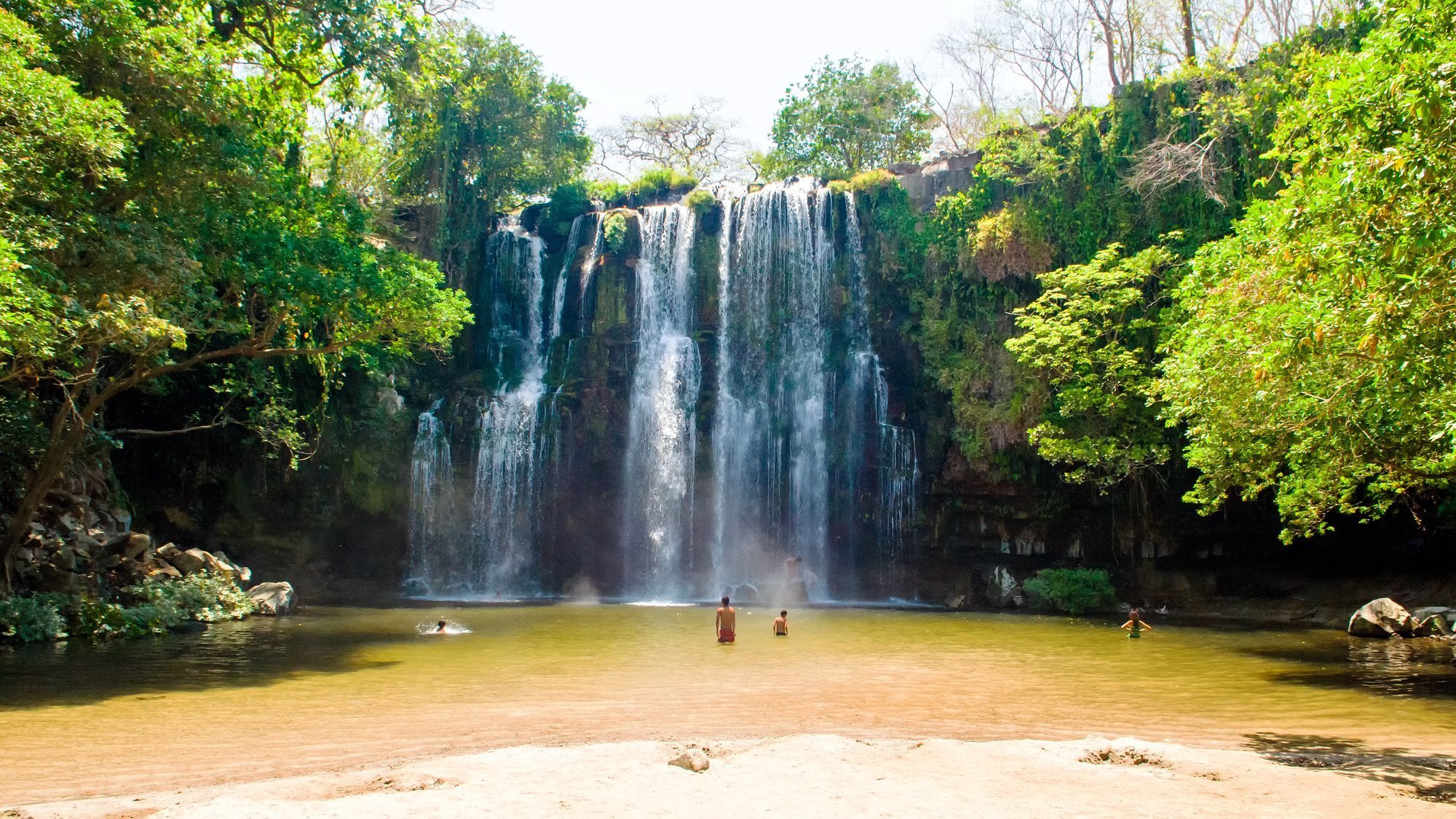Costa Rica Regions

Republic of Costa Rica
República de Costa Rica (Spanish)
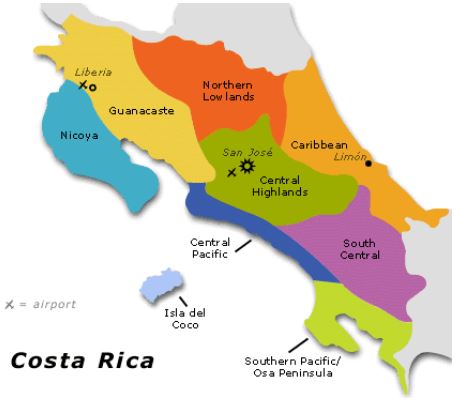
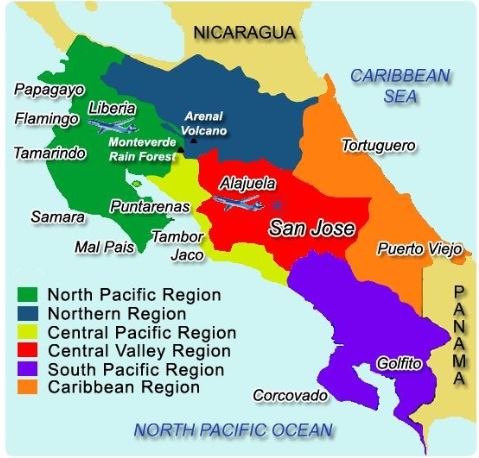

Central & South Pacific Region
Costa Rica’s Central Pacific area is characterized by small coastal villages and several well-developed resort areas. It’s mixed with palm plantations that stretch down the length of the coastline. Here, there are several beach towns that are popular with visitors to the area including Jaco Beach, Esterillos, Manuel Antonio and Dominical–to name a few. The Pacific Coast offers great surfing, an abundance of rainforest wildlife and the classic Costa Rica laid back vibe.
Manuel Antonio
Locate it on the Central Pacific area, Manuel Antonio is one of the most visited tourist destinations of all Costa Rica. Its National Park is a biological oasis formed by primary and secondary forest. Its most important fauna we find the raccoon, coatimundi, agouties, two toed sloth, the white face and squirrel monkey. You can also enjoy the beauty of beaches Espadilla Sur, Puerto Escondido, Punta Cathedral and Manuel Antonio. Manuel Antonio is a fusion of scenic mountain beauty and active lifestyle; this is just a place that offers something for everyone.
Dominical
Locate it on Central Pacific coastline, is one of the best location for Whale & Dolphin watching.
Dominical it´s the gate to Osa Peninsula and belongs to the Osa conservation area which includes the Marino Ballena National Park. The park was named after the humpback whales that migrate from July to October and from December to March. One of the priorities of this park is to protect the marine ecosystems of Costa Rica.
Dominical is a great place for bird watching, surfing, hiking, snorkeling and a scenic view of the Nauyaca falls.
Corcovado
Located in the Osa Peninsula in the southwest of the country Corcovado is considered the greenest and one of the most remote, pristine territories in Costa Rica. Corcovado is a land of multiple ecosystems that range from mangroves, swamps, mountain forest, lagoons, beaches and lowland rainforests. The park conserves the largest primary forest on the American Pacific coastline and one of the few remaining sizeable areas of lowland tropical rainforests in the world.
Corcovado is home to a sizable population of the endangered Baird’s Tapir and even a small population of the very rare Harpy Eagle. In the park’s rivers and lagoons, you can find a big population of both the American crocodile and Spectacled Caiman, along with Bull sharks. Corcovado is also one of the final strongholds of the Jaguar within Central America and several other felines are also present, including Ocelot, Margay, Jaguarundi, and Puma. All four Costa Rican monkey species can be seen within the park, including the endangered Squirrel Monkey, White-faced Capuchin, Howler, and Spider Monkey. Other mammals present include Two-toed and Three-toed Sloth, Collared Peccary, Northern Tamandua and Silky Anteater.
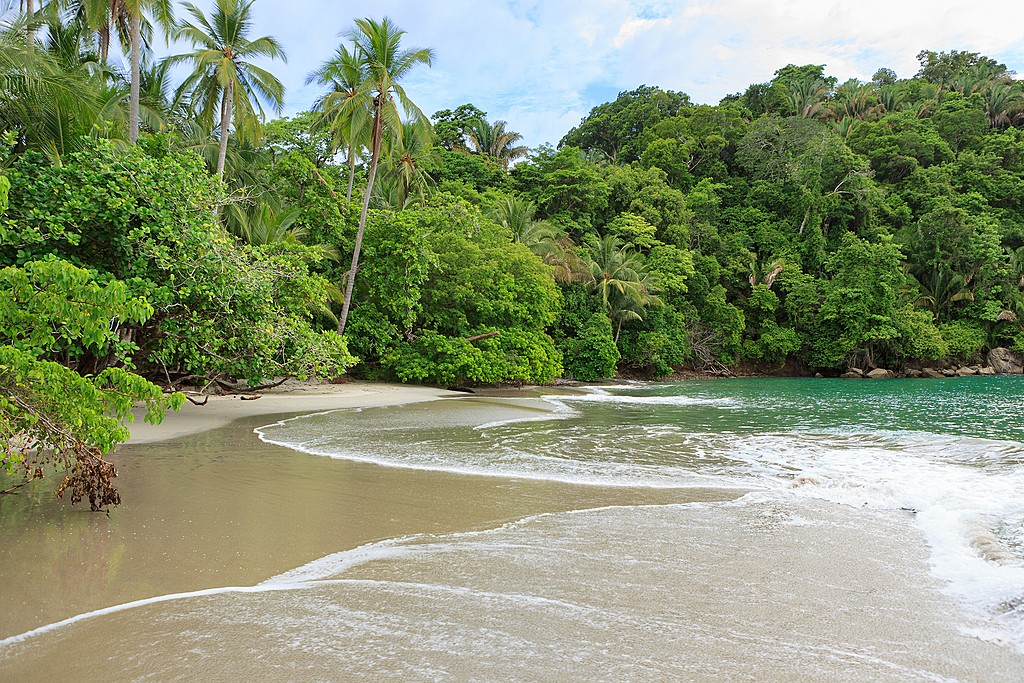
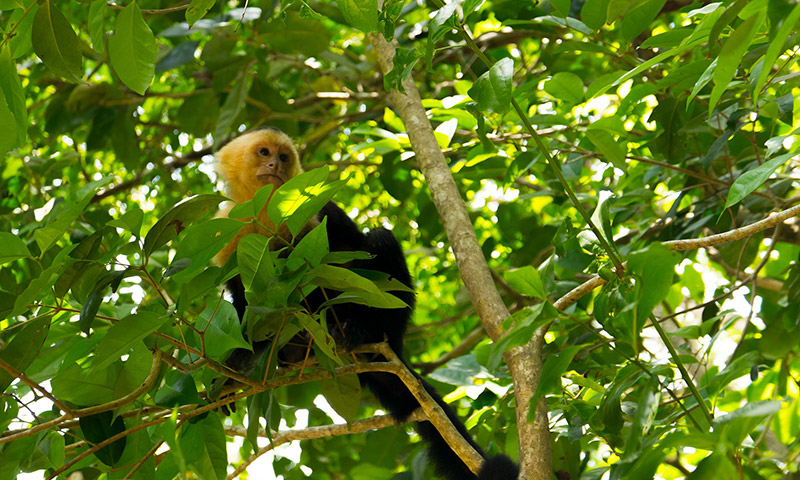
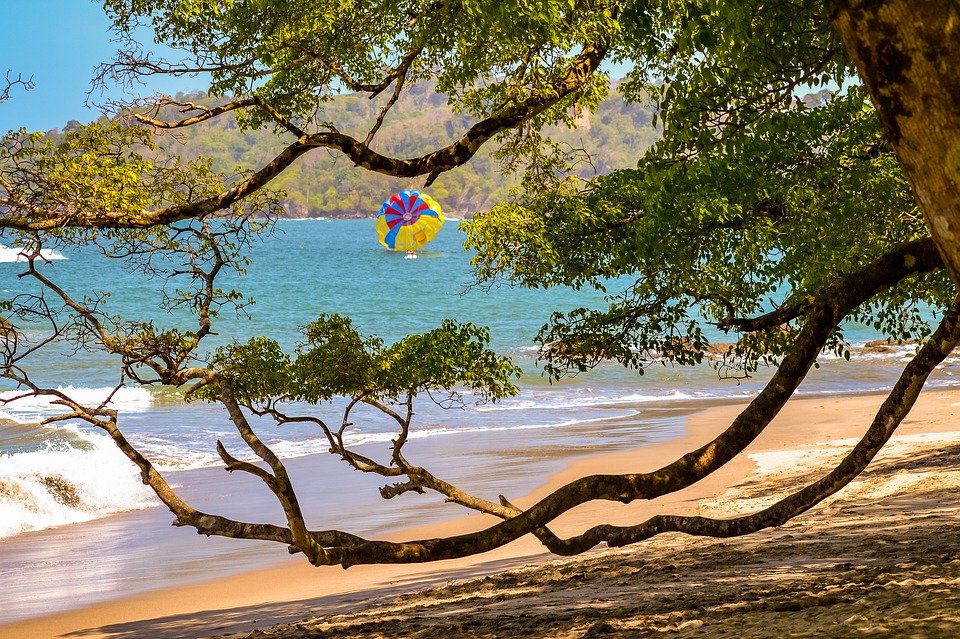

Central Region
Just outside of the capital of San Jose, and usually every visitor’s first stop, is Costa Rica’s Central Region. Known throughout Costa Rica for its amazing and rich biodiversity as well as for being a place for bird watching, biological research, education and adventure. The Central Valley has a lot to offer including hotels, volcanos, waterfalls, coffee plantations and museums and restaurants in the bustling metropolitan area of San Jose. Popular locations close to the capital includes the famous active Poas Volcano and the rain and cloud forest of the La Paz Waterfall Gardens located in the Barillo Carrillo National Park.
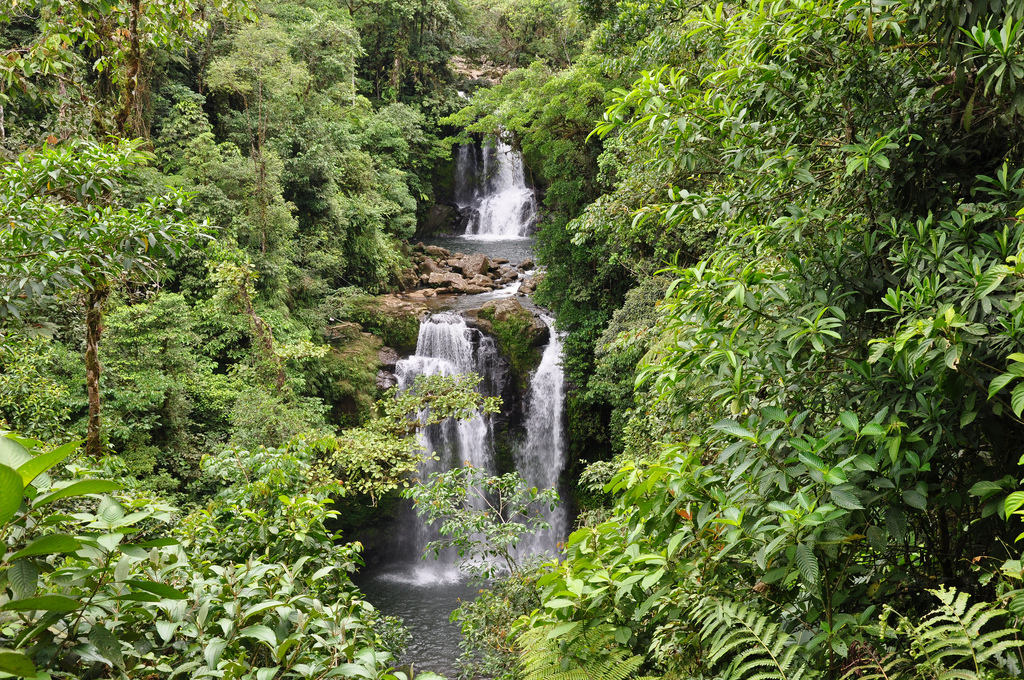
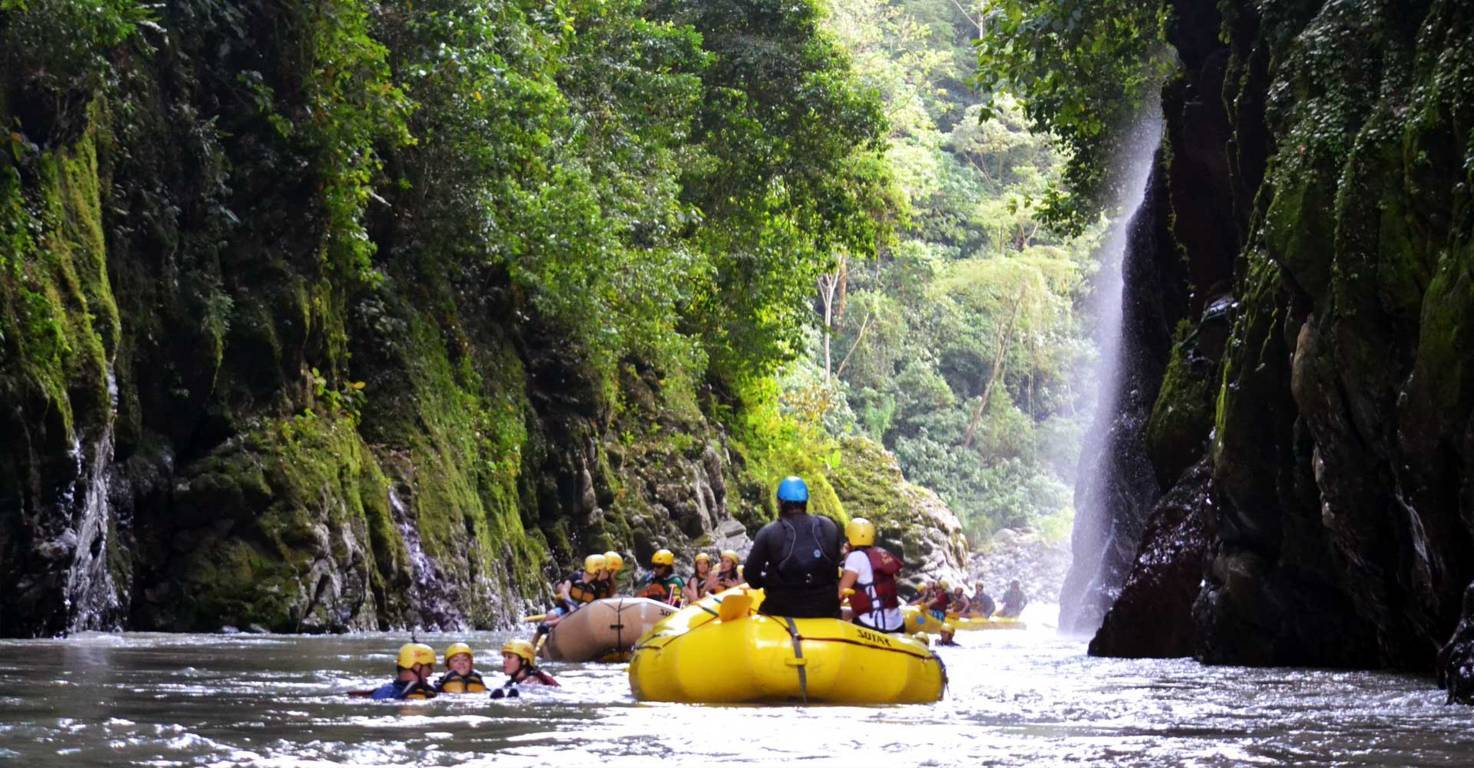
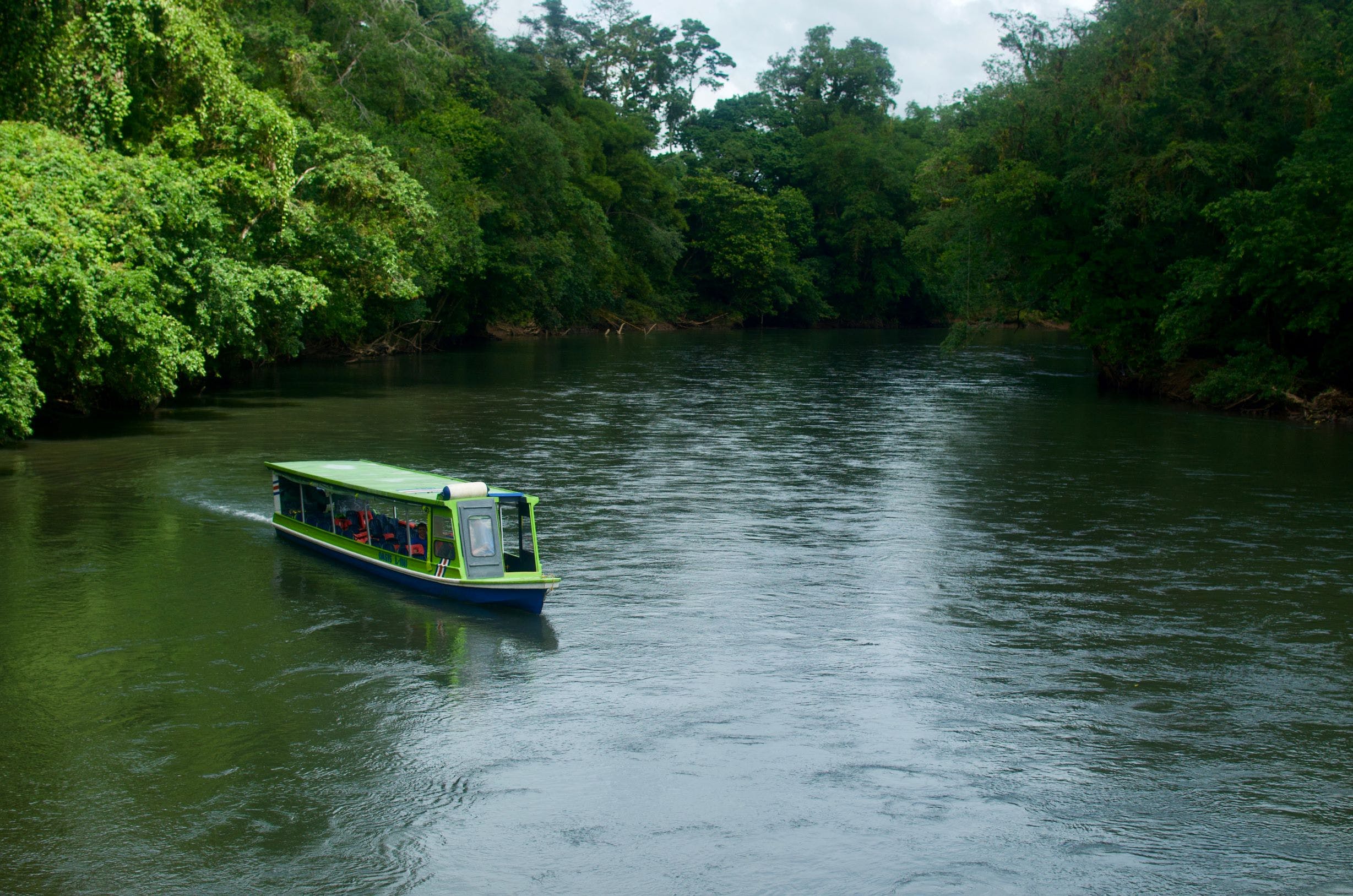
Sarapiqui
Lying in the north east of the country, Sarapiqui is now a very popular tourist getaway for families and thrill seekers alike. One of the few remaining areas in Costa Rica that is the dwelling of the endangered Green Macaw, Sarapiqui is also home to a number of nature reserves and national parks including the Braulio Carrillo National Park and the Sarapiqui Protected zone. Sarapiqui today has transformed itself into a major ecotourism area. If you do visit this region a stopover at the international La Selva Biological Research Station is a must. This area is one of the most diverse in Costa Rica and is home to a plethora of indigenous flora and fauna.
If you enjoy the outdoors, there are plenty of hiking and nature walk opportunities in this region as well as white water rafting down the River Sarapiqui and Paquare. A boat trip down these rivers is a great way to catch a glimpse of this region’s wildlife including monkeys, birds, turtles and caimans. If you are an avid bird watcher, coming here is the perfect way to see some of Costa Rica’s many bird species in their natural environment such as hummingbirds, quetzals, dippers, guans, agoutis and quatamundis.
Pacuare
The Pacuare River is one of Costa Rica’s best and most popular locations for whitewater rafting and kayaking. Located in the middle of a rainforest surrounded by dense vegetation and beautiful waterfalls, this area is home to wild cats, monkeys, sloths, frogs, snakes and a big variety of insects and birds. Our programs include a raft in and raft out lodge option where getting to and from your lodge is half the adventure. Most guests stay at the lodges as part of a multi-day rafting tour on the Pacuare River (though it can be visited without rafting or a one-day raft only option). This unforgettable river trip takes you through lush jungle and narrow canyons where tropical trees tower over the riverbank and crystalline waterfalls plummet out of the greenery. In addition to rafting, while at the lodge you can enjoy horseback riding, bird watching, canyoning, canopy tours, or treks to a Cabecar Indian community. These river lodges are also an ideal spot to kick back and relax, enjoy the scenery, serenity and wonders of the rainforest.

Caribbean Coast
A wild and beautiful region with pounding surf and prehistoric rainforests, Costa Rica’s Caribbean Coast is a beach lover’s delight. Set apart from the rest of the country, this region of Costa Rica offers tourists some of the most gorgeous white sand coconut tree lined beaches that one has ever seen. Actually, one of the country’s most geographically diverse regions with inland rainforests that stretch right up to the coastline, the Caribbean expanse of Costa Rica has beautiful swampy lagoons to the north and is bordered by the towering Talamanca Mountains to the south. Running for some 125 miles between the borders of Panama and Nicaragua, the entire of Costa Rica’s Caribbean Coast lies inside of Limon province. First discovered by Christopher Columbus who landed here in 1502, this province is one of the least traveled areas of the country. Almost always hot and humid throughout the year, this part of Costa Rica receives the highest amount of rainfall, with major downpours taking place between May and August and then in between December and January. One of the lushest regions in Costa Rica, when the weather is good Limon offers tourists a plethora of activities to enjoy from some outstanding diving opportunities to awesome surf breaks, superb sport fishing and an excellent chance to get up close and personal with nature.
Tortuguero
Locate in the northeast corner of Costa Rica, Tortuguero is one of the most visited areas in the country. Here, discover the secrets of exuberant biodiversity and extensive maze of fresh and saltwater canals that intertwine through the jungle that are home to thousands of plants and animals. Within the area of Tortuguero you can find different habitats, including rainforest, swamps, beaches, and lagoons. It is located in a tropical climate, is very humid, and receives up to 250 inches of rain a year. Tortuguero is also a home for sea turtles such as Hawksbill, Loggerheads, Green and Leatherbacks.
Puerto Viejo
Located in Limon province on the shores of the Caribbean Sea, Puerto Viejo de Talamanca is a beach lover’s paradise. Here amidst the exotic flora and fauna, lies a vibrant seaside town with gorgeous beaches, crystal clear blue waters, and some of the most amazing surfing opportunities. Fast becoming one of Costa Rica’s premier tourist hot spots, many international surfers come here from all over the world to ride the famed Salsa Brava waves, making this Caribbean influenced town is a ‘must visit’ place when in Limon. This bustling town lies 34 miles south east of Puerto Limon, and 10.2 miles south of Cahuita. Formerly a quiet little fishing village, Puerto Viejo has a charm that is all its own. Becoming increasingly popular, especially with the young hip crowd, this town is among the top-rated surfing destinations of the world. With its relaxed atmosphere and its own unique blend of Latino, Afro-Caribbean and Bribri indigenous cultures, Puerto Viejo is a lively place to have a fun relaxing vacation.
Cahuita
Located along Costa Rica’s amazingly beautiful and exotic Caribbean Coast, Cahuita is a relaxing paradise some 43 km south of Puerto Limon. A stunning black sand beach town with warm calm waters ideal for swimming and snorkeling, Cahuita sits just south of the Cahuita National Park. Among the most visited national parks in Costa Rica, the Parque Nacional Cahuita offers tourists not just great beaches, but a lush coastal rainforest and some fabulous coral reef to explore and discover. A fantastic place to relax away, Cahuita’s popularity is rapidly increasing as its neighboring town of Puerto Viejo de Talamanca is fast becoming Costa Rica’s top party destination. With a number of hotels, local sodas and restaurants in town, Cahuita has plenty to offer in the way of spending some quiet tranquil time alone or with a loved one.
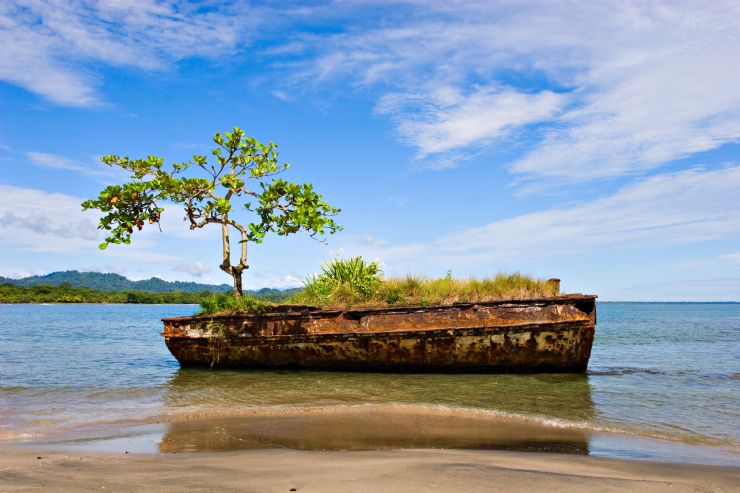
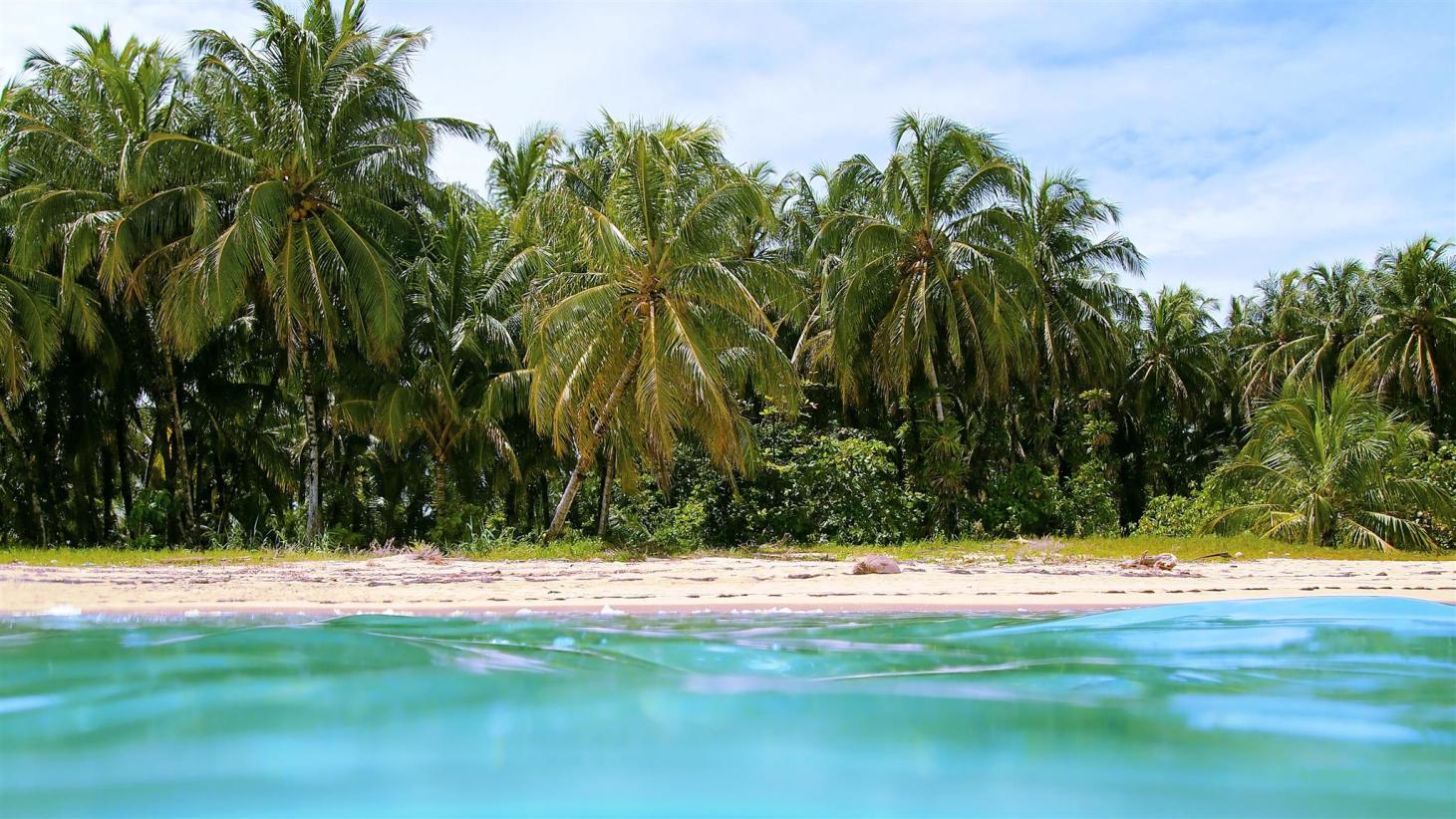


Northern Region
Costa Rica’s northern region is surrounded by unique mountains, cloud forests, animals, plants, lakes and an incredible volcano to add a perfect ingredient to create and enjoy an adrenaline loaded adventure for every visitor.
Northern Costa Rica is best for nature lovers looking for incredible hiking, birding, wildlife spotting and adventure tours in the rainforest. Although you won’t find any beaches, you’ll find incredible spas around the Arenal Volcano and thousands of tropical plants and animals in the Monteverde Cloud Forest. You’ll forget about the beach and become fully immersed in nature on your exploration of Costa Rica’s northern region.
Arenal
Located in Costa Rica’s fertile northern lowlands, 90km northwest of the capital San Jose, stands the world famous Arenal Volcano. Arenal was Costa Rica’s most active volcano until 2010, and one of the ten most active volcanoes in the world. It has been studied by seismologists for many years. Although the activity nowadays is less damaging, you can still see ash columns and hear underground rumbling. Arenal today has entered into an indeterminate resting phase though it is still a sight to be seen, measuring at 1,633 meters (5,358 ft) with a conically shaped crater spanning 140 meters (460 ft). Beyond the volcano, the Arenal area is now considered the adventure capitol of Costa Rica. There are mountains to be hiked, lakes to be fished, rivers to run and world-famous volcano hot spring spas to relax at. As one of the country’s most scenic and accessible areas, it is a requisite stop on any tour of Costa Rica.
The small town La Fortuna locate it on the outskirts of the Arenal Volcano area, is an amazing location offering different kinds of lodging, dining and entertainment experiences. Natural thermal water pools and cascades serve as an excellent idea to relax and have and unbelievable time.
Monteverde
Set atop the spine of Costa Rica’s continental divide, Monteverde is a place of cloud forests and coffee plantations, monkeys, mist, and friendly locals. The town of Santa Elena is small and quaint, filled with tasty restaurants and folksy artisan shops, while the nearby rainforest hosts a remarkable amount of biodiversity. Due to its high altitude – some 4,662 ft (1,440 m) above sea level – Monteverde is one of the most outstanding wildlife sanctuaries in the tropics. The reserve spreads out over 10,500 hectares of land that hold six different life zones. The climate and terrain of the preserve produce an incredible biodiversity. Privileged to receive a steady supply of clouds and the life-giving moisture that they contain, this moisture, often in the form of fog, catches on the branches of the tallest trees and drips down to the other organisms below. This helps to support a complex and far-reaching ecosystem, one that harbors over 100 species of mammals, 400 species of birds, tens of thousands of insect species, and over 2,500 varieties of plants, 420 of which are orchids alone making Monteverde a true “nature lover’s paradise”. Visitors can explore this internationally recognized environment from trails and trams, along canopy tours or inside museums.

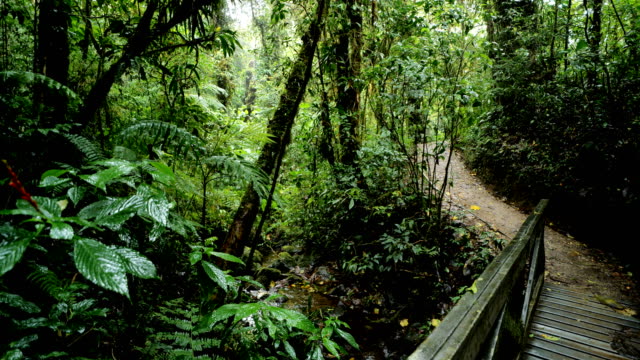
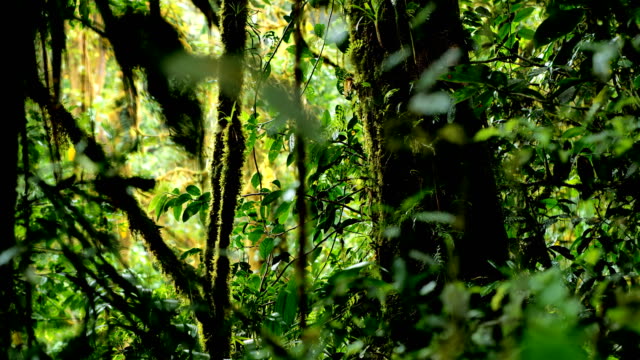
North Pacific Region / Guanacaste
Located on the Northern Pacific Coast of Costa Rica, the Guanacaste Province and become one of Costa Rica’s most popular vacation destination. With over 400 miles of coastline and surrounded by volcanos like the famous Rincon de la Vieja, Guanacaste is home to world-class, hotels and all-inclusive resorts. It is also easily accessible thanks to the Liberia International Airport. Guanacaste boasts pristine beaches, abundant rainforests and variety of boutique, eco, 5-star and romantic hotels.
Guanacaste
Guanacaste is unique in Costa Rica for its dryer, tropical climate. Although Guanacaste does still experience a rainy season, it is still the driest part of the country. That means more time sunbathing on white sandy beaches or adventuring through lush rainforests. The dry tropical climate and proximity to both beaches and mountains make the ideal location for travelers seeking anything from sun and relaxation to mountain adventure to nature and birding tours. Guanacaste’s extraordinary natural diversity, great climate, stunning beaches and vacation tours make it the ideal vacation destination.
